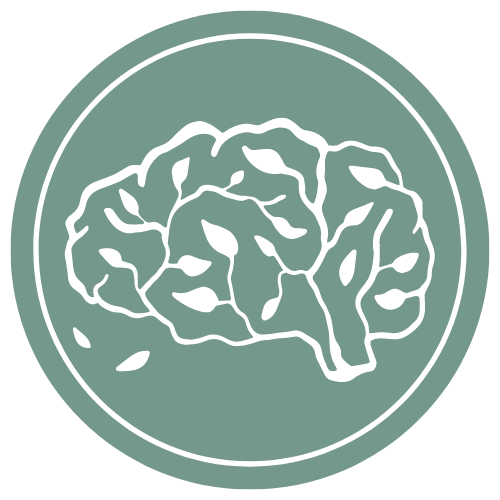MRI Protocols and Sequences

1. Protocol Selection:
Choosing the right MRI protocols and sequences is crucial for obtaining the best possible images for the clinical question or research objective. For instance, T1-weighted imaging is ideal for anatomical detail, while T2-weighted imaging is better for identifying pathologies such as edema or tumors. The choice of protocol should consider tissue type, desired contrast, and anatomical area. Additionally, standardized acquisition parameters and logical axioms for different MRI types are essential to ensure reproducibility and interoperability.
2. Optimizing Sequences:
Optimizing MRI sequences involves adjusting various parameters to improve image quality. Here are some key adjustments:
- Field Strength: Higher field strengths can provide better signal-to-noise ratios and spatial resolution.
- Repetition Time (TR) and Echo Time (TE): Adjusting TR and TE can enhance contrast and resolution. For T1 sequences, shorter TR and TE are preferred, while longer TR and TE are better for T2 sequences.
- Flip Angles: Modifying flip angles can help achieve optimal image contrast.
For practical applications, utilize resources like the following videos:
Equipment Setup:
- Coil Selection and Placement: Select the appropriate coil based on the body part being imaged. Properly position and secure the coil to optimize signal reception and image quality.
- Adjusting Scanner Settings: Adjust scanner settings such as field strength, repetition time (TR), echo time (TE), and flip angles based on the imaging protocol. Ensure these settings are optimized for the specific clinical or research question.
- Calibration Procedures: Regularly calibrate the MRI scanner to ensure accurate and consistent imaging results. Follow the manufacturer's guidelines for calibration frequency and procedures.
3. Imaging Techniques and Troubleshooting
Artifact Reduction:
Minimizing artifacts in MRI is essential for clear and accurate imaging. Techniques to reduce common artifacts include:
- Motion Artifacts: Encourage patients to remain still and use breath-hold techniques. Motion correction algorithms can also be applied during post-processing.
- Susceptibility Artifacts: Use shorter echo times and optimized sequences to reduce these artifacts, especially in regions with air-tissue interfaces or metal.
- Chemical Shift Artifacts: Adjust the bandwidth and use fat suppression techniques.
For detailed instructions on mitigating different artifacts, refer to the following resources:
Signal Enhancement:
Enhancing the signal-to-noise ratio (SNR) and contrast-to-noise ratio (CNR) can be achieved using various methods:
- Contrast Agents: Administer gadolinium-based contrast agents to improve visibility of structures and pathologies.
- Advanced Imaging Techniques: Techniques like parallel imaging and higher field strengths can enhance image quality.
4. Data Acquisition and Storage
Image Acquisition:
Acquiring high-quality MRI images involves careful planning and parameter selection. Key considerations include:
- Slice Orientation and Field of View (FOV): Proper orientation and FOV settings ensure comprehensive coverage of the target area.
- Spatial Resolution: Higher resolution provides more detailed images but may require longer scan times.
- Standardized Parameters: Consistent acquisition parameters are crucial for reproducibility across different studies and sites. The MRIO framework provides guidelines for standardization.
For tips on enhancing image quality, including increasing base resolution and using thin slices, refer to MRI Master.
Data Storage and Management:
Efficient storage and management of MRI data are essential for long-term usability and sharing:
- Standardized Formats: Use DICOM and NIfTI formats for consistency.
- Metadata Annotation: Ensure all relevant details are included to facilitate data sharing and reproducibility.
- Data Repositories: Platforms like OpenNeuro and XNAT are useful for storing and sharing data.
For more information on data storage strategies, refer to the following resources:
5. Basic Image Analysis
Introduction to Image Analysis:
Image analysis involves several steps to extract meaningful information from MRI data:
- Segmentation: Dividing the brain into regions of interest (ROIs) to study specific areas.
- Registration: Aligning images from different scans or subjects for comparison.
- Quantification: Measuring volumes, shapes, and other metrics of brain structures.
Software Tools:
Various software tools are available for MRI analysis:
- FSL (FMRIB Software Library): Used for brain imaging analysis, including preprocessing, segmentation, and statistical analysis.
- FreeSurfer: FreeSurfer is an open source package for the analysis and visualization of structural, functional, and diffusion neuroimaging data.
- SPM (Statistical Parametric Mapping): Analyzes brain imaging data sequences.
- AFNI (Analysis of Functional NeuroImages): Processes and displays functional MRI data.
- Python Libraries: NiBabel and Nilearn are useful for neuroimaging data manipulation and machine learning. Visit our Python Tutorial page for examples.
- MATLAB: MATLAB is commonly utilized to process, visualize and analyze neuroimaging data. Visit our MATLAB for Neuroimaging tutorial for more information.
FAQ and Practical Tips
- What is the importance of preprocessing MRI data? Preprocessing is crucial for removing artifacts, normalizing data, and preparing it for analysis. Steps typically include motion correction, spatial normalization, and smoothing. Proper preprocessing ensures the accuracy and reliability of the analysis.
- How do I perform basic image analysis on MRI data? Basic image analysis steps include:
- Segmentation: Dividing the brain into regions of interest (ROIs).
- Registration: Aligning images from different scans or subjects.
- Quantification: Measuring volumes, shapes, and other metrics of brain structures.
- What libraries are commonly used for MRI analysis in Python? Several Python libraries are widely used in the field:
- NiBabel
- Nilearn
- NumPy
- Matplotlib
- Plotly
- What is the role of machine learning in MRI analysis? Machine learning can be used to automate and enhance various aspects of MRI analysis, such as:
- Classification: Identifying disease states based on MRI data.
- Segmentation: Automatically delineating anatomical structures.
- Prediction: Forecasting disease progression or treatment outcomes. Popular libraries include scikit-learn, TensorFlow, and PyTorch.
- How can I share and manage MRI data? Data sharing and management involve:
- Standardized Formats: Using formats like DICOM and NIfTI for consistency.
- Metadata Annotation: Ensuring all relevant details are included with the data.
- Repositories: Using platforms like OpenNeuro and XNAT for data storage and sharing.

